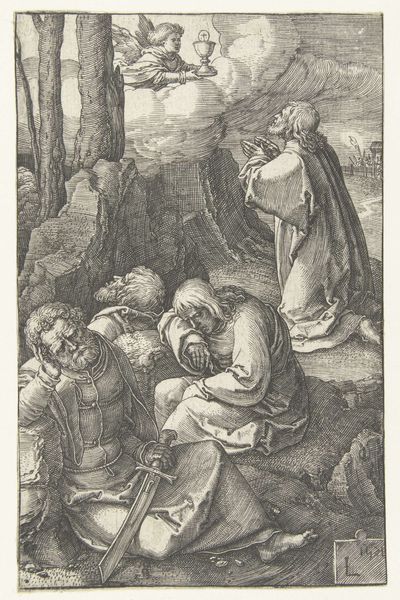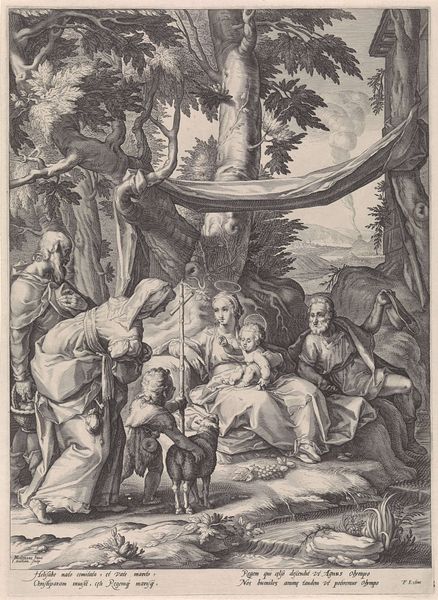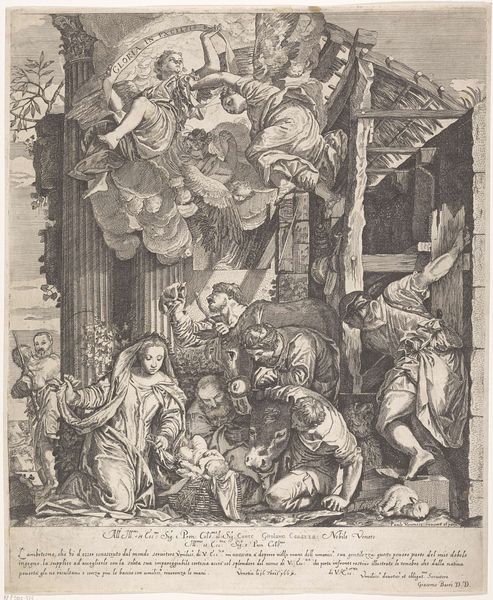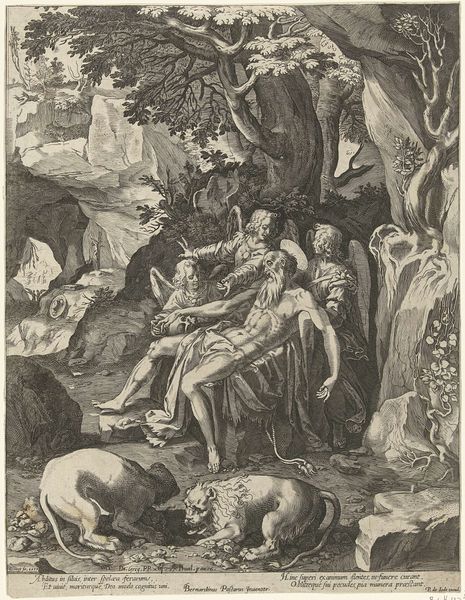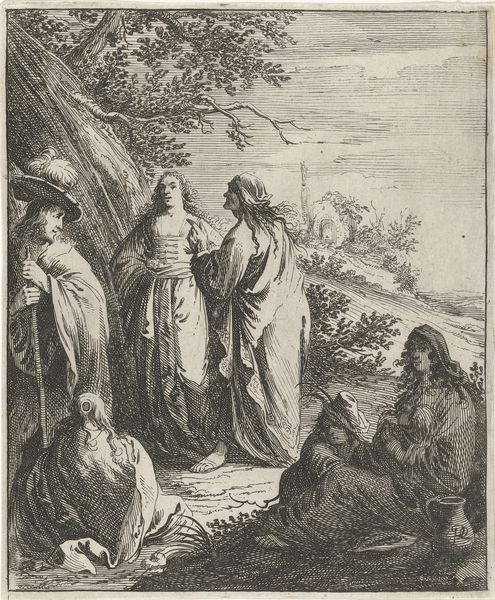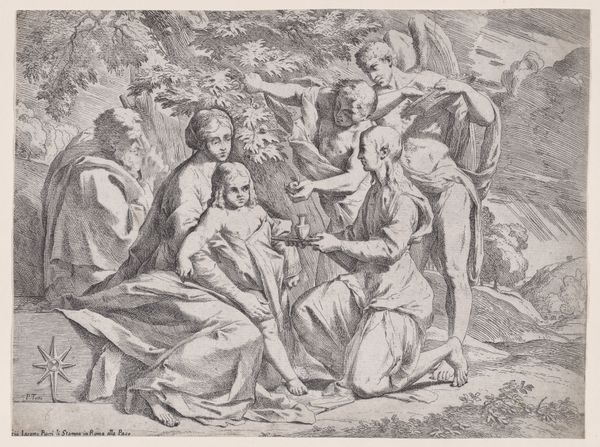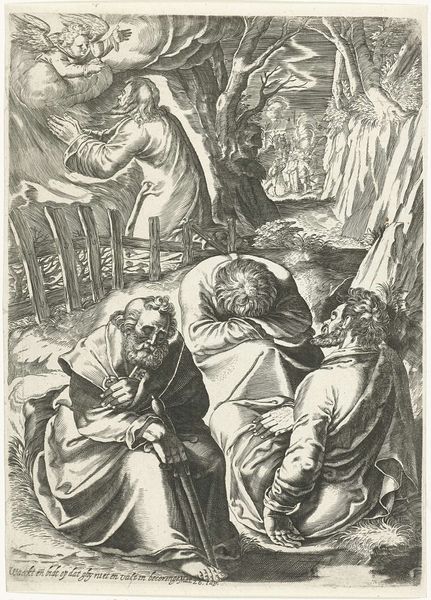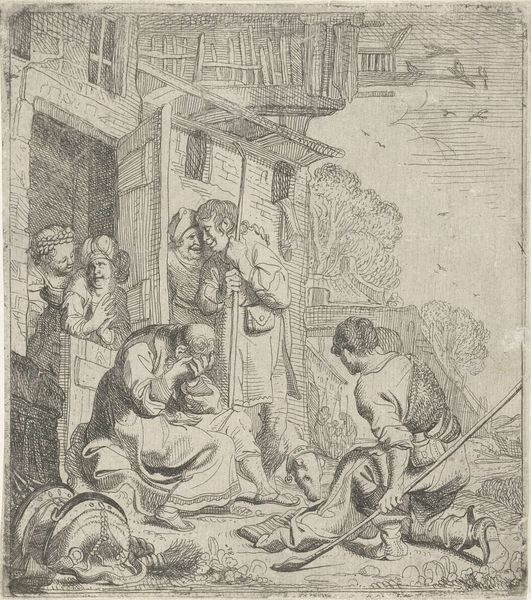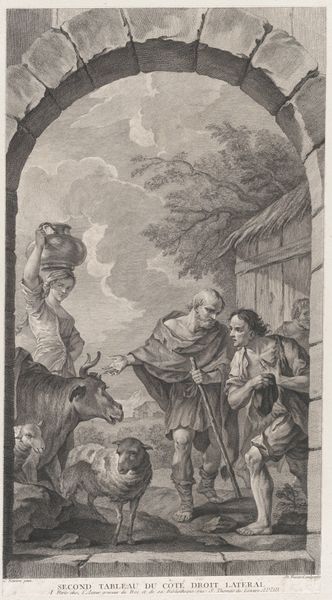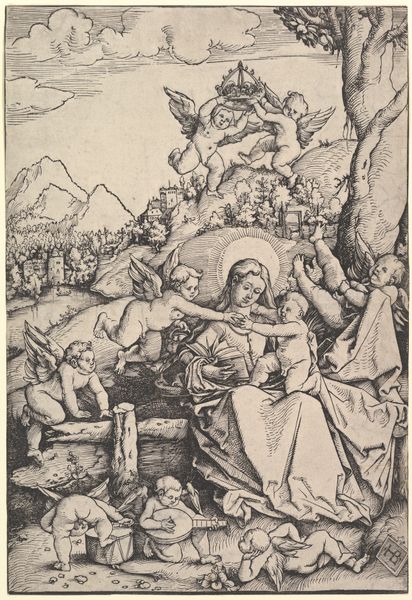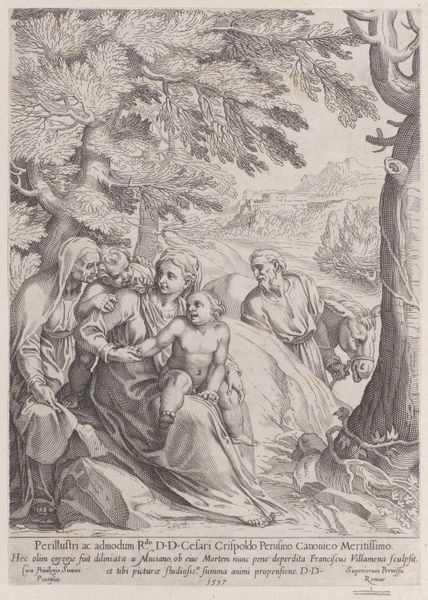
drawing, print, ink, engraving
#
drawing
#
baroque
# print
#
pen sketch
#
landscape
#
figuration
#
ink
#
line
#
history-painting
#
engraving
Dimensions: height 185 mm, width 129 mm
Copyright: Rijks Museum: Open Domain
Curator: Welcome to the Rijksmuseum. Today, we'll be discussing "Christus in hof van Getsemane," an engraving likely created between 1590 and 1632, attributed to Pieter de Jode I. Editor: It’s… stark. The monochrome palette gives it an austere, almost unsettling feel. The line work is incredibly detailed, though. What were prints and engravings used for at that time? Curator: Prints such as this one played a critical role in disseminating imagery during the period. It was a relatively affordable way to circulate religious stories to a wider audience. This print would have taken significant manual skill with sharp tools to carve the lines into a metal plate for printing. Think of the labor and artistry involved! Editor: Focusing on the central figures, the symbolism is heavy. We have Christ kneeling, an angel offering him… what? A chalice? That reinforces the theme of sacrifice and divine will. And below him are the sleeping disciples. Keys are there, laying near one of them. Is that St. Peter and the keys to heaven? Curator: Indeed. The keys definitely allude to Saint Peter. This whole composition reinforces Christ's isolation and acceptance of his fate but also a commentary of humanity unable to provide solace in tough moments. Editor: I can see the material implications rippling outwards. Consider the paper itself – it's become a vehicle for spreading faith but produced through processes of human and economic means. Who made the paper? What was the ink made of? Was there an industry to all these factors already? Curator: Precisely! This work embodies cultural memory through recognizable figures and composition that are central in religious artworks of the era, it also hints at much of the production and commercial structure around prints that helped share these visuals with more than just an elite audience. It allows us to interpret meanings but understand the economics around it all too. Editor: Looking again, the landscape almost swallows the figures, despite their placement. The dramatic lighting – that stark contrast again – emphasizes their vulnerability within the broader world. Curator: Absolutely. A relatively mass produced item such as this connects spiritual ideas but allows you to dig deeper in its socioeconomic existence. A great conversation about meaning and means. Editor: Indeed, quite a bit to unpack from this seemingly simple print.
Comments
No comments
Be the first to comment and join the conversation on the ultimate creative platform.

